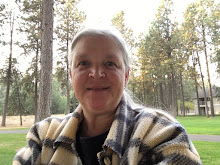- Feeding
- Watering
- Turning
- Adding fresh bedding
All of this is a piece of cake compared to the process of harvesting the finished material out of the bins. Since the worms are top feeders, and all the new material and feed is constantly being added to the top of the bin...all of the finished material is located at the bottom of the bin. This means that in order to get to it all the unfinished material on top must be moved for the finished material, which is full of the castings, to be accessed.
In my bigger 4X8' bins the process is made easier by providing a space at one end of the bin just for finished material. Approximately 1/4 of the bin is sectioned off for this purpose. This allows for the casting material to finish further composting and begin the drying process.
 Once the product is removed from the bins it is moved into holding bins that allow me to continue to turn the casting material to dry further. My aim is to get the casting material dry enough to go through an 1/8 inch screen without leaving the holes clogged with moist casting material. Keep in mind however, that the castings need to contain a certain amount of moisture to maintain the life in the castings.
Once the product is removed from the bins it is moved into holding bins that allow me to continue to turn the casting material to dry further. My aim is to get the casting material dry enough to go through an 1/8 inch screen without leaving the holes clogged with moist casting material. Keep in mind however, that the castings need to contain a certain amount of moisture to maintain the life in the castings.
 If you're ever in the area, look us up. We are a great Farmer's Market experience!
If you're ever in the area, look us up. We are a great Farmer's Market experience!





